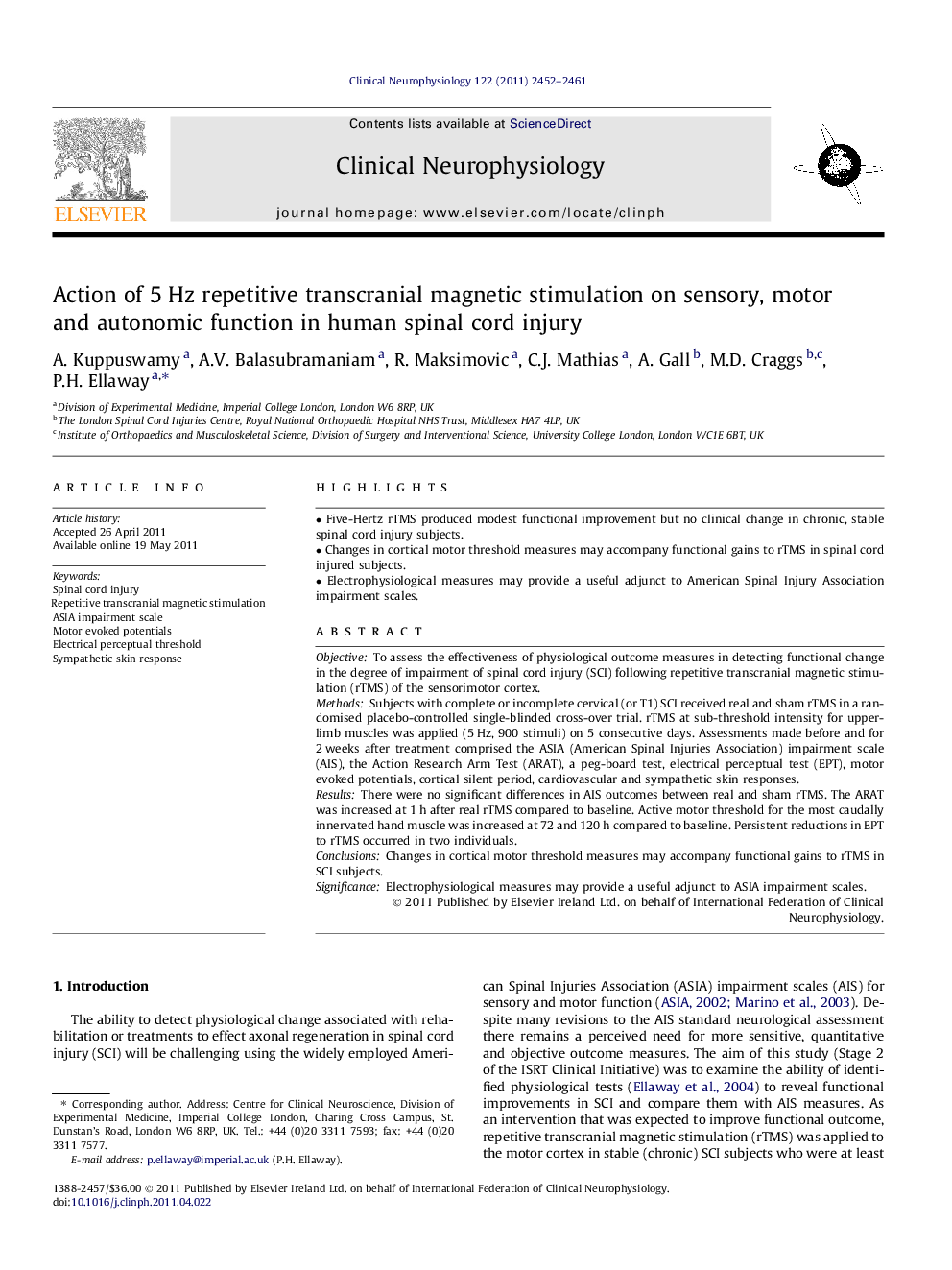| Article ID | Journal | Published Year | Pages | File Type |
|---|---|---|---|---|
| 3043982 | Clinical Neurophysiology | 2011 | 10 Pages |
ObjectiveTo assess the effectiveness of physiological outcome measures in detecting functional change in the degree of impairment of spinal cord injury (SCI) following repetitive transcranial magnetic stimulation (rTMS) of the sensorimotor cortex.MethodsSubjects with complete or incomplete cervical (or T1) SCI received real and sham rTMS in a randomised placebo-controlled single-blinded cross-over trial. rTMS at sub-threshold intensity for upper-limb muscles was applied (5 Hz, 900 stimuli) on 5 consecutive days. Assessments made before and for 2 weeks after treatment comprised the ASIA (American Spinal Injuries Association) impairment scale (AIS), the Action Research Arm Test (ARAT), a peg-board test, electrical perceptual test (EPT), motor evoked potentials, cortical silent period, cardiovascular and sympathetic skin responses.ResultsThere were no significant differences in AIS outcomes between real and sham rTMS. The ARAT was increased at 1 h after real rTMS compared to baseline. Active motor threshold for the most caudally innervated hand muscle was increased at 72 and 120 h compared to baseline. Persistent reductions in EPT to rTMS occurred in two individuals.ConclusionsChanges in cortical motor threshold measures may accompany functional gains to rTMS in SCI subjects.SignificanceElectrophysiological measures may provide a useful adjunct to ASIA impairment scales.
► Five-Hertz rTMS produced modest functional improvement but no clinical change in chronic, stable spinal cord injury subjects. ► Changes in cortical motor threshold measures may accompany functional gains to rTMS in spinal cord injured subjects. ► Electrophysiological measures may provide a useful adjunct to American Spinal Injury Association impairment scales.
